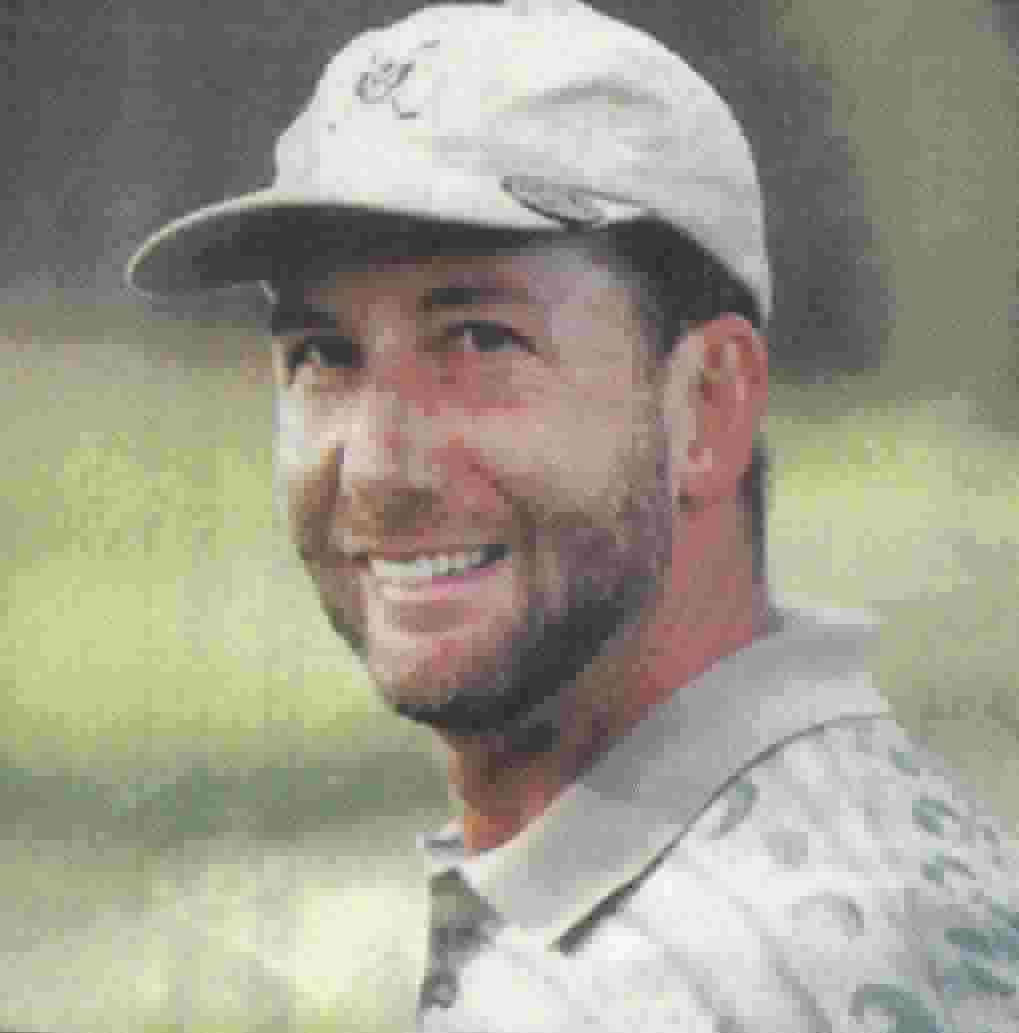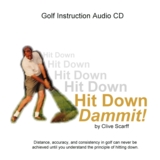Distance & Technology Part 5: Optimize
in all Weather
Read
Part 1 of this series
here, Clubhead
Mass.
Read Part 2 of this
series here, Clubhead
Loft.
Read
Part 3 of this series
here, Clubhead
Shaft.
Read
Part 4 of this series
here, Clubface
Area.
If you'd
like one on
one explanations
about the topic,
sign up for the PGI
Member Select Club and
I'll answer all your
questions. Now on
to this week's topic.
V. Weather
and It's Effect on
Distance
Once
you have a driver
that optimizes
distance for your
swing, other than
how you swing on
a day, the next
major factor that
determines how
far you drive the
ball is the weather.
Distance depends
on air temperature,
humidity and air
pressure. A golfer
can modify his/her
game slightly in
different weather
conditions to optimize
distance on any
given day.
Temperature
affects distance
in two ways. Firstly,
the colder the
club and the ball,
the less transfer
of energy there
is between the
club and ball.
The resulting ball
speed is less.
Secondly, the colder
the air, the greater
its density resulting
in greater frictional
drag on the ball
and less distance.
This second reason
is more significant
than the first.
Learn more by clicking
here.
You
can't do much about
the air temperature,
but you can do
a little about
the temperature
of the club and
ball, especially
the ball. If you
take a warm ball
and hit it, it
won't take longer
for it to cool.
By the end of playing
a hole, the ball
will be the temperature
of its surroundings.
What you can do
is start the round
with 4 warm balls
(kept inside the
house prior to
playing). Bring
out a warm ball
on each tee. Upon
finishing a hole,
return the cold
ball to your pocket
for warming.
If
the fairways are
moist and the ball
is not getting
much roll, you
might consider
hitting a more
lofted club (2
wood or 3 wood)
off the tee. Depending
on your trajectories,
you might get greater
distance. Or, you
could tee the ball
up a little higher
with a driver playing
the ball more forward
in your stance.
This will promote
swinging up on
the ball slightly
and getting greater
height on your
tee shot.
If
it is windy, and
a hole is playing
downwind, definitely
consider hitting
a more lofted wood
off the tee. To
maximize the effect
of the downwind,
you want to maximize
flight time, thus
you need a higher
trajectory. This
strategy definitely
pays off if the
fairways are soft
as well. Learn
more by clicking
here.
When
playing into the
wind,
a lower trajectory
is desired. If
you can hit your
driver lower
than normal, you'll
realize the greatest
distance. Most
important, however,
when playing into
the wind is to
hit the ball solidly
without sidespin.
Players often are
anxious when playing
into the wind and
try to hit it farther
by swinging harder.
Such a strategy
will result much
more often with
mishits that don't
have as much speed
and have sidespin
(short distance
off the fairway).
On
hot dry days with firm
fairways, you might
find hitting it lower
off the tee is best.
You won't carry the
ball as far, but should
get more run and thus
more overal distance.
This does depend upon
your normal trajectory,
though, which might
be too low for optimum
distance in the first
place.
I
also promised to
provide an itemized
checklist for buying
a new driver. Here
are my recommendations:
1.
Selecting a driver
right for you is
going to take time.
It's important that
you hit a
number of different
drivers on the range
as well as on the
course (most pro
shops have demo clubs).
Remember, maximum
distance depends
on ball speed,
ball backspin and
launch angle. The
amount of backspin
and launch angle
depend on the loft
of the driver as
well as the position
of its center of
mass (not all 10
degree drivers will
produce the same
launch conditions).
2.
The bigger, the better!
The bigger the face
of the club, the
more forgiving it
will be on mishits.
The volume of the
club is usually related
to the size of the
face, but is not
that relevant. The
higher your handicap,
the larger the face
needs to be because
high handicappers
hit more mishits
and the degree of
mishit is higher.
3.
Most drivers today
are made with
optimum clubhead
mass, about 200 g.
One of my cautions
about clones is the
possibility they
may be more or less
massive than the
optimum. As well,
their center of masses
may be too high or
low to produce optimum
distance. They may
look the same on
the outside, but
might not be the
same on the inside.
You'll need to experiment
by hitting different
clubs on the range
and on the course.
Some clones might
be very good, some
bad.
4.
If your driver is more
than 4 years old, you
can definitely add some
distance by buying a
new one, especially if
your driver is even older.
Even if the new driver
wasn't any longer on
solid hits, it would
be longer on the mishits.
The newer drivers offer
maximum rebound velocity
of the ball (coefficient
of restitution). Couple
a new driver with a good
ball, and you'll notice
significantly more distance.
5.
If you want maximum distance,
go with a driver with
a light graphite shaft
(the lighter the better).
Most new drivers automatically
come with graphite shafts.
Of course there are good
graphite shafts and not
so good graphite shafts.
Don't be overly concerned
with the stiffness of
the shaft. It doesn't
make a signiciant difference
to distance. Choose a
stiffness that feels
good for your swing.
Usually this means a
stiff shaft if you're
a relatively long hitter
and a less stiff shaft
if you're a shorter hitter.
Too whippy of a shaft,
however, may cause you
some loss in accuracy.
In addition, more flexible
shafts will open/close
more at impact, thus
changing the effect loft
of the club (stiff shaft
produce lower trajectories
than flexible shafts).
Play
with my Driver
Distance Calculator.
You can input such
variables as loft
and clubhead speed
to determine the
optimum loft.
A list of resources that have been used to produce this newsletter
can be found on my
website here.
The next newsletter's topic will how to optimize distance off
the tee using the right
golf ball. What are
the different balls
out there? Do they
make a difference?
Which should you play?
The focus
of my site
is to utilize science
and math to lower
your score. New technology
is one
way to achieve this,
but to be honest,
the technology is
one small piece of
the puzzle.
To actually improve significantly,
we all need to:
1. Improve our swings. Hit
Down Dammit!
2. Improve our physical fitness
and strength.
The
Golf Trainer Power
Performance Programô
3. Improve our mental games.
Golf
Mind Software
4. Improve our Probable
Golf games.
Learn how to make better
choices on the course
through knowing how
shot patterns and reading
the elements and course
better.
Click on the links above to
take a look at
ways that I personally
use myself and
recommend you try
as well.
Hope
I provided some useful
ways for to become
better prepared for
you best golf season
ever.
Ken Tannar
If you'd like to opt out of this newsletter, send
me an email with the subject "opt
out, please"
|









